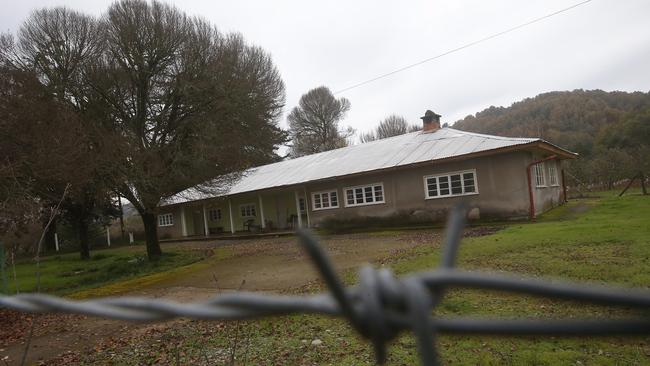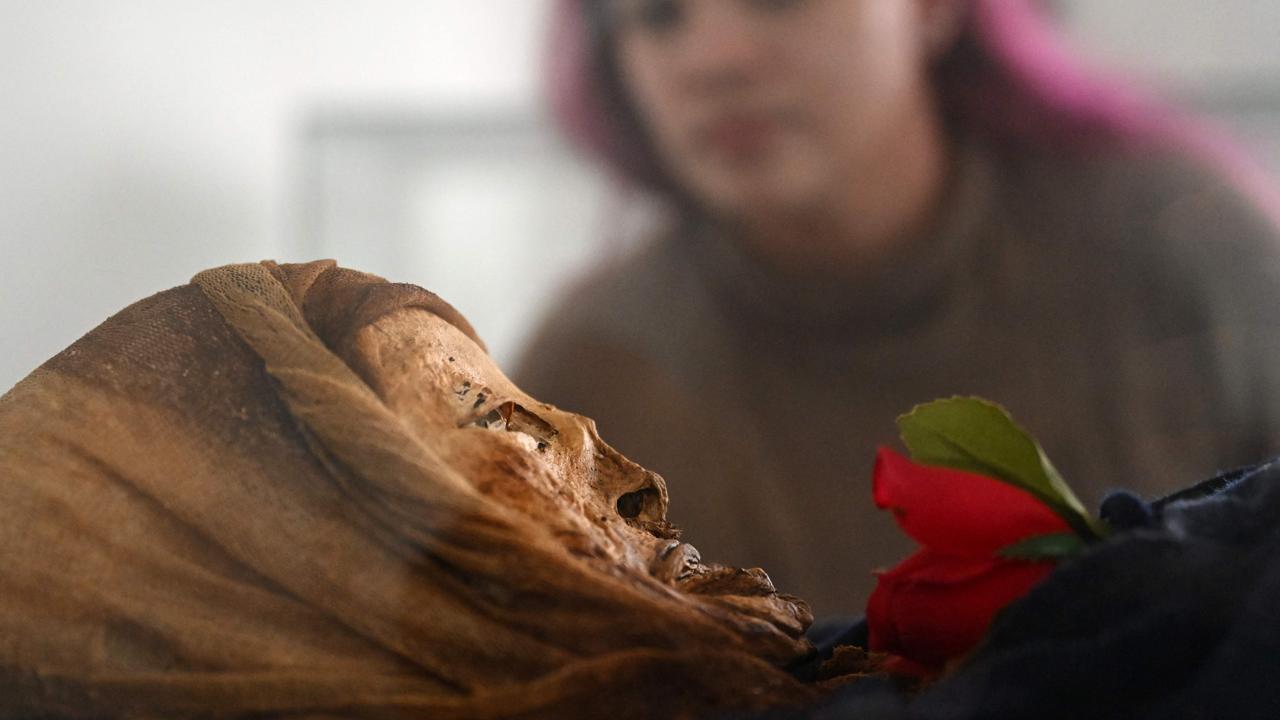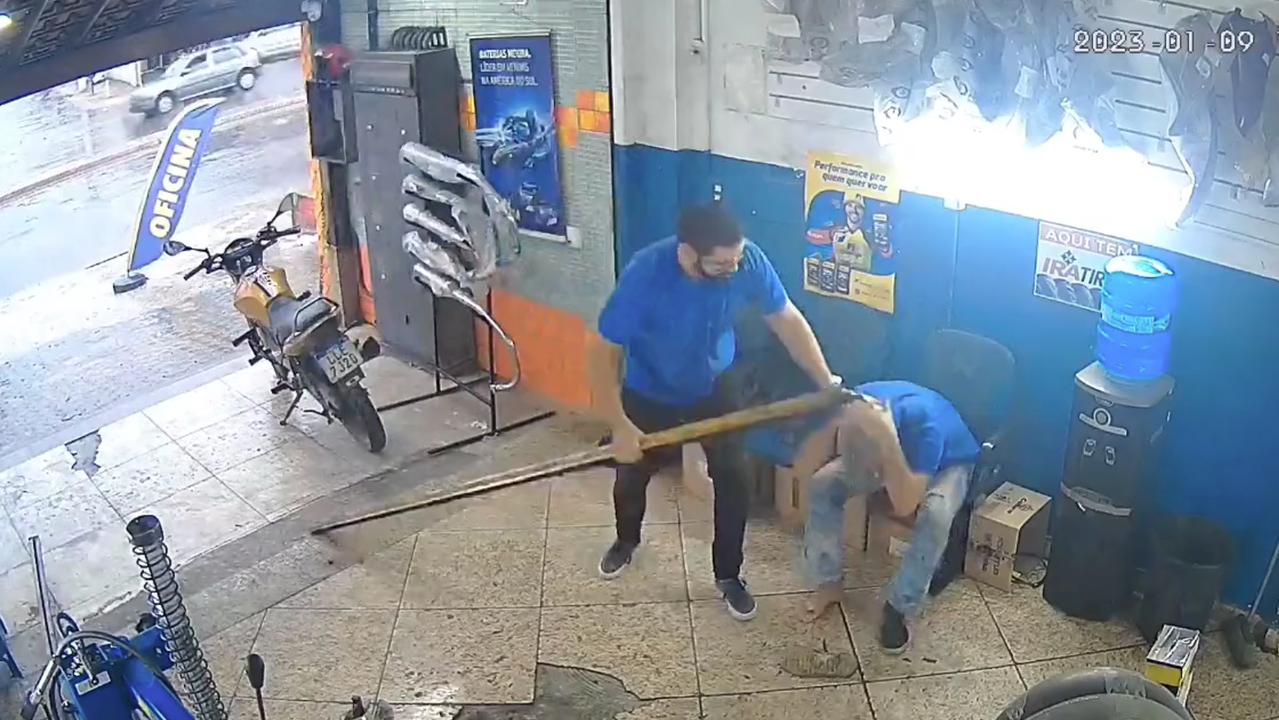Inside Chile’s bizarre Nazi torture cult
THE former home of a sinister cult, torture chamber and ex-Nazi paedophile is now a bizarre tourist attraction in South America.

THE name of the place was Colonia Dignidad, which translates to Dignity Colony, but not much dignity could be found there.
On the foothills of the picturesque Andes Mountains in central Chile, it was instead a place of unimaginable depravity, where children were sexually abused, political dissidents were mercilessly tortured, and more than 100 people were led to their deaths and buried on the spot. Now renamed Villa Baviera, the place is today a tourist resort, fascinating visitors with its twisted history that combines a sinister cult, sex abuse, torture, slavery and Nazism, all playing out in the Chilean wilderness. ‘IRON-FISTED TOTALITARIAN REGIME’ Paul Schafer was Colonia Dignidad’s charismatic leader. A former member of the Hitler Youth, a World War II corporal and evangelical preacher, Schafer fled Germany for Chile in 1961 to escape prosecution for alleged child abuse. Many of his devotees followed him — including children without their parents ��� and Schafer set up a commune for his fellow German exiles in a remote area north of Santiago. He named it Colonia Dignidad. From the outside, the colony was a sustainable agricultural community that did charity work for the local population. Like many in Schafer’s flock, Helmut Schaffrick and his wife Emi had sold their house in northern Germany with the promise of a new life in Chile. But things were not what they seemed. The Schaffricks scraped together the equivalent of $22,500 and handed the lot over to Schafer, who reportedly told them it was only for a temporary stay. “But they were tricked,” Horst, one of the Schaffrick couple’s children, told AAP. “They thought they would build a place where they would do good works and live like good Christians. They found nothing but slavery and suffering.” The agricultural commune was really more akin to a secretive cult, where its members were brutally abused and forbidden to leave. Schafer demanded documents from those who followed him to Chile and imposed an “iron-fisted totalitarian regime,” according to lawyer Winfried Hempel, who was born in Colonia Dignidad. Colonists endured brutal, 16-hour work days, tough punishment and unforgiving surveillance. Former colonists have said people were subjected to beatings, electroshock therapy and drugging. Couples were forced to live apart and children were separated from their parents. Many of those children were sexually abused by Schafer. Only select colonists were given access to news from life outside colony. After a few years, some people managed to escape and news of the terrible conditions inside the colony began to leak. But the 1973 military coup that saw General Augusto Pinochet seize power in Chile also gave Colonia Dignidad a new, and still terrible, purpose. ‘A STATE WITHIN THE CHILEAN STATE’ Schafer offered the colony to the new regime and through the 1970s it became a place for political dissidents to be brought for torture by Pinochet’s secret intelligence agency. Some 350 people were tortured in a secret potato warehouse on the colony grounds and about 100 were murdered and buried there, according to investigations into the regime. Erick Zott Chuecas was a student activist in 1975 when he was arrested by Pinochet’s secret police and interrogated, before being taken to Colonia Dignidad. “They applied special bandages, putting wet cotton balls in my ears, putting a leather helmet over my head that covered my ears and tied my hands and feet,” he said of his treatment at the colony’s torture centre, the Santiago Times reported. “They didn’t want me to know where I was being taken. When we entered the grounds of Colonia Dignidad, I had a feeling that this moment would be my last.” Chuecas said most of his time was spent horizontally. “I was attached to a military camp bed — my feet, legs, back and hands were tied,” he said. “I was virtually immobilised. I was forbidden to speak and had no sense of time. “They only took me out to interrogate and torture me ... then they tied me to a bed again. “I would sleep from time to time and when I woke up I didn’t know if I’d been asleep for 10 minutes or two hours. “Colonia Dignidad was a state within the Chilean state. It was hermetically sealed off from the outside world.” The colony also became a holiday destination for Pinochet and his inner circle of officers. It was also believed to have played host to “Angel of Death” Josef Mengele, a Nazi doctor known for his lethal human experiments during the Holocaust. Nazi fugitive Walter Rauff, who invented the portable gas chamber, is also said to have found refuge at the colony. Colonia Dignidad apparently thrived under Pinochet’s regime, which offered it tax breaks for being a charitable organisation and turned a blind eye when escapees reported abuses. Investigations in 2005 uncovered two large caches of illegal weapons in and around the property, which included machine guns, rocket launchers and even a battle tank. It was the largest arsenal of arms ever found in private hands in Chile. THE MAKINGS OF A TOURIST TRAP After Pinochet’s military dictatorship in Chile was voted out things began to change for Colonia Dignidad. By 1997, Chilean authorities began investigating Schafer for crimes relating to child abuse, tax fraud, weapons, forced labour and the torture and disappearance of prisoners, and he fled to Argentina. Schafer was captured in 2005 and in a Chilean supermax jail in 2010, five years into a 20-year sentence. He was 88. Numerous investigations, including the major Rettig Report into human rights abuses during the Pinochet regime in Chile, have continued to unlock details about the shocking conditions at Colonia Dignidad. Earlier this year Germany said it would declassify documents on the colony, with foreign minister Frank-Walter Steinmeier pointed to German diplomats’ failure to stop abuses that happened there. “For many years, from the 1960s to the 1980s, German diplomats looked the other way, and did too little to protect their citizens in this commune,” he said. “Even later, when Colonia Dignidad was dissolved and the people were no longer subjected to the daily torture, the service lacked the determination and transparency to identify its responsibilities and to draw lessons from it.” The colony’s grim history was recently dramatised in the film Colonia, starring Harry Potter actor Emma Watson. Colonists were stunned when the outside world finally penetrated their enclave. Some returned to Germany while others stayed at the commune. “When Schafer’s dictatorship ended, we fell into chaos,” Thomas Schnellenkamp, 46, a son of a jailed former leader, told the New York Times. “We learned about what had happened here, people started blaming each other and no one trusted anyone anymore. There was a lot of frustration, and many left.” An agricultural colony remains at the site today but is struggling in the face of huge debt. Colonists hope interest from tourists into the site’s dark past will help them stay afloat. Now named Villa Baviera, the place is a German-themed tourist resort, complete with hotels and restaurants. Tourists explore the rugged wilderness, take rides along the river and enjoy the picturesque scenery of the Andes mountains. They can also see where political dissidents were buried and visit the sleeping quarters of armed guards who once ruled the colony with an iron fist. But not everyone has embraced tourists at the site, with some victims’ families saying it was offensive to “dance on the dead”. “It’s a lack of respect for those who still miss their dear ones. Villa Baviera should become a place to commemorate the victims,” Margarita Romero, from the Colonia Dignidad Memorial and Human Rights Association said earlier this month. — with AAP




